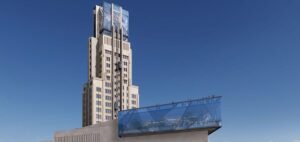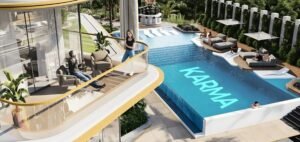Prime Highlights
- Bartlett MArch students reveal a leisure centre that responds to tidal fluctuation.
- The building morphs visually and functionally as water goes up and down.
Key Facts
- The building has a corroding metal cladding that measures tides and attracts marine life.
- Revealed at the 2025 Bartlett Summer Show, it demonstrates passive climate responsiveness.
Key Background
In an innovative exhibition of ecological adaptability, students at the Bartlett School of Architecture created a flood-responsive leisure facility that translates tidal fluctuation into space. The project, one of the final projects exhibited at the Bartlett Summer Show 2025, stands for an embracing of nature by design instead of fighting against it.
Located on a marshy site, the building is to be half submerged with high tide and opened up at low tide. Rather than elevating the building to prevent flooding, the building design incorporates water-flow channels to enter and exit naturally. The daily transformation forms the basis for dynamic space experiences—spaces that change in mood, use, and shape based on water conditions.
The most dramatic feature may be the metal facade, created to corrode when it comes into contact with water. The corrosion inscribes an ever-changing tidal record onto the building surface over time. The façade is not merely altered superficially—it welcomes aquatic colonization and becomes an integral part of the environment.
Inside, the recreational center enhances physical and psychological health through the sensorial reaction of the building to the tides. Acoustic features, thermal gradients, and light play are all affected by rising and falling water levels. In certain areas, rooms become reflective and contemplative at high tide, while physical activity is facilitated at low tide in others.
This student solution defies traditional thinking about climatic resilience in that it embraces instead of resists change. The passive response of the building to flooding—coupled with its capacity to adapt structurally and experientially—leads the way to a new paradigm for future development in flood-prone areas. The Bartlett’s exhibition emphasizes the point that architectural innovation is possible through complementarity with nature and not against nature.
Read Also : Studio Libeskind Unveils Refined Boerentoren Design with Sculptural Glass Crown in Antwerp





